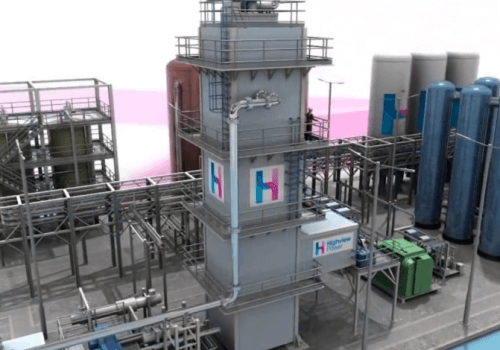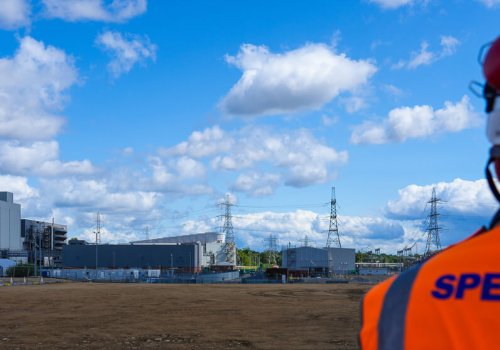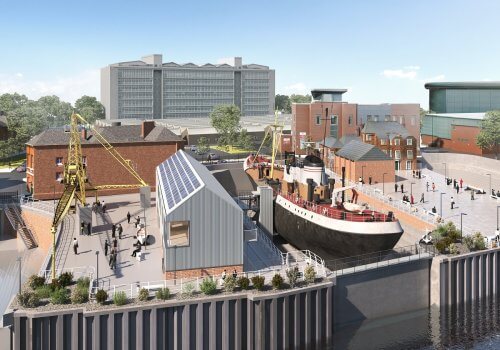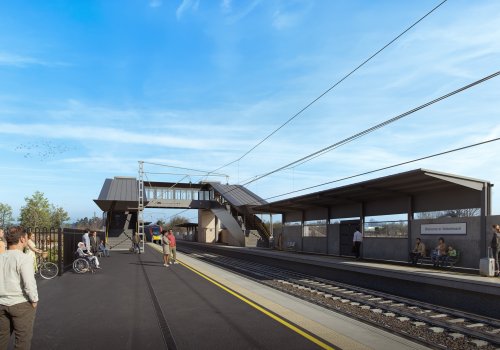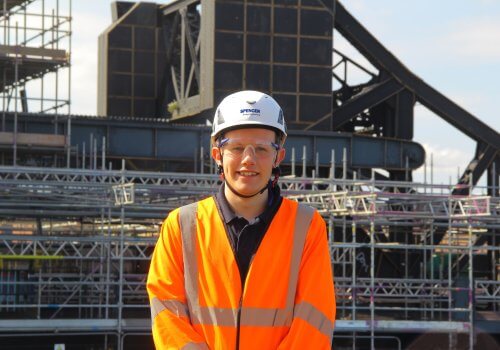Spencer Group has completed work on the brand new station in Rochester.
The first train ran from the new station at 17:24 on Sunday 13th December. Claire Perry, the Minister for Rail and Conservative MP for the Devizes constituency, officially opened Rochester Station on Monday 14th December, celebrating this milestone event.
The new £26 million facility, which replaces the old Victorian station a mile away, was built around an operational railway, close to the centre of Rochester in Corporation Street. This ambitious and technically complex feat was likened by Network Rail staff to ‘performing open heart surgery’.
Spencer Group accomplished the task of completing the station while causing as little disruption as possible to the travelling public. The project included the construction of three new platforms, each long enough to accommodate the latest 12-car trains (compared to the previous maximum of ten), a new canopy and fit-out of the station.
The result is a modern facility which is lighter, brighter and fully step-free, offering a pleasurable passenger experience.
The moment an 850-tonne underpass ‘slid’ into place
One of the biggest challenges of the project was the construction of an 850-tonne pedestrian subway, forming part of the new station at Rochester. It was built ‘off line’ and adjacent to the existing rail embankment, then installed during a 96-hour blockade over the Easter period.
The reinforced concrete subway, which is 28m long, 7.6m wide and 4m high, was slid 36 metres into place after the Spencer Group team had excavated through the embankment the previous day. The team used ten jacks to lift the structure off the ground by 100mm. Each jack was bolted to a compressed nitrogen pad, which ran along a steel skid-way, with each pad then being pressurised with nitrogen gas. The pads acted like a ‘mini-hovercraft’, riding on a cushion of nitrogen along the skid-way. This resulted in a greatly reduced friction between the subway and the skid-way, meaning that a pushing force of only eight tonnes was required to slide the structure into place.
Tom Kerins, Operations Director at Spencer Group, said: “Installing the subway was an extremely important and challenging aspect of the works at Rochester and it is testament to the expertise, forward-thinking and hard work of our team that it was completed safely and successfully.
“Moving such a large structure into place presented us with a number of logistical challenges but, by using innovative technology, it was completed without incident and ahead of schedule. It was the first subway slide of this type carried out in the UK using this technology.”
Rochester – the core of a major multidisciplinary programme in East Kent
Rochester Station is at the heart of the £145 million East Kent Phase II programme to upgrade a 33-mile stretch of East Kent’s railway network which was last renewed in 1959. This major multidisciplinary undertaking has involved several of the industry’s main contractors including Spencer Group, Atkins and Balfour Beatty.
Spencer Group was responsible for delivering all of the civil engineering elements throughout the programme. This included the extension of platforms at Strood and Sole Street Stations to accommodate the 12-car trains now in service. In addition, the team created a turn-back facility at Rainham in the form of a new 12-car bay platform.
The project in the Medway area followed on from the award-winning remodelling of Gravesend Station, which Spencer Group delivered during an intensely successful 15-day blockade.
East Kent Phase II has been described as an industry model for collaborative working, with the achievement of BS11000 accreditation for Spencer Group. To create a culture of collaborative working from the outset, an alliance was formed between all supply chain partners and Network Rail. Working as a one solutions-driven team, Spencer Group and its collaborative partners designed innovative delivery approaches and achieved engineering savings in the provision of a successful engineering solution that will benefit millions of passengers every year.
The wider benefits of Rochester Station for the local community
The new station in Rochester is crucial to Network Rail and Medway Council’s shared vision of regeneration – improving access to Rochester’s historic town centre and attracting London-bound commuters to the new Rochester riverside development. To cope with the expected rise in weekday travellers, there will be five additional morning rail services into London.
The station and its underpass are key to a new 1,500 home development, as residents will be able to take a quick stroll between the riverside and town centre or hop on a train and be in London in 35 minutes.
Throughout the project, Spencer Group endeavoured to use a supply chain representing a wide and diverse spread of local organisations. Companies included: Sian Formworks from Gravesend, a family-run contracting company for civil engineering; Reinforced Concrete Projects; CCS Scaffolding from Gravesend; ASH from Ramsgate; CRS from Ashford; Gallagher from Maidstone; and McNealy Brown from Sittingbourne. A concerted effort was also made to use local workers, with around 90 per cent of the Spencer Group workforce employed from the area.
Spencer Group has an excellent record of maintaining good community relations in civil engineering projects of this kind and Rochester Station was no exception. Everyone in the team worked hard to minimise disruption in the town centre during works.

Outcomes of the project
Adrian Kilburn, Project Director at Spencer Group, said the project was a privilege to work on, but that it presented a number of technical challenges: “It was a pleasure to be a part of this major project, which followed quickly on the back of the work we successfully delivered for Network Rail over the previous Christmas during a very demanding 15-day blockade at Gravesend.
“The construction of a completely new station at Rochester, with a reinforced concrete subway under the tracks, was a great achievement, increasing accessibility for all passengers.
“Another achievement for Spencer Group during the East Kent Phase II works was our BS11000 accreditation – an industry-recognised standard which enabled us to put into place our framework for collaborative working. The benefits of this have been plain for everyone to see, and our ‘one team’ ethos has brought success in the civil engineering works throughout East Kent.
“I’d like to offer my thanks to my colleagues on the Spencer Group team and for everyone at Atkins, Balfour Beatty and Network Rail for pooling their knowledge and resources to add value to our work.”
Spencer Group delivered operational savings and improved network integration with other modes of transport throughout the East Kent Phase II programme – a highlight being the new subway at Rochester.

